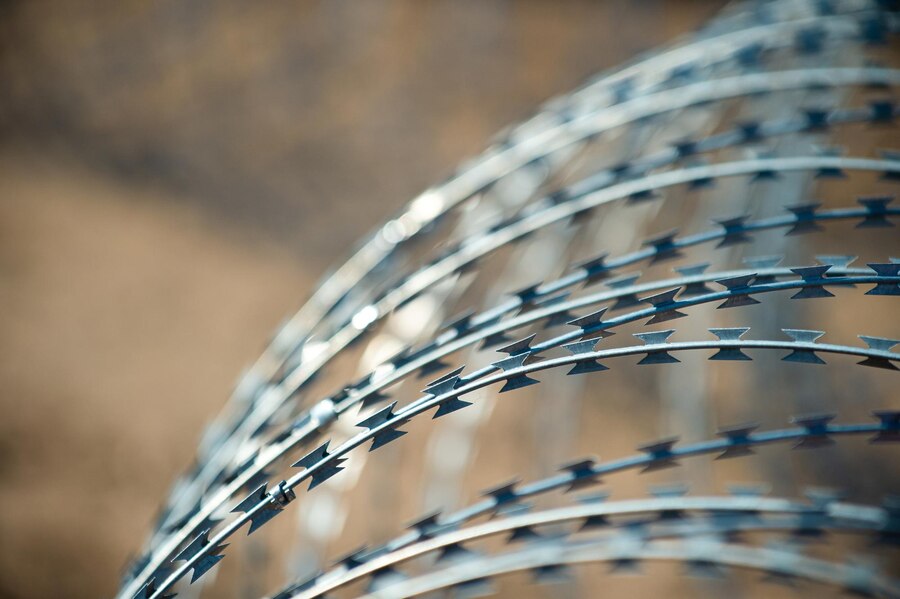Concertina wire, also known as razor wire, is a widely-used security barrier composed of razor-sharp blades wrapped around a core wire. Its effectiveness in deterring and impeding unauthorized access has made it a staple in military installations, prisons, borders, and high-security facilities worldwide. In this article, we delve into the various aspects of concertina wire, from its history and composition to its applications and installation techniques.
History of Concertina Wire
Concertina wire finds its origins in the early 20th century, primarily as a military asset. It was first utilized during World War I as a defensive measure to impede enemy advances. The design, resembling the musical instrument concertina due to its accordion-like shape, proved to be highly effective in obstructing movement.
Composition and Structure
Concertina wire typically consists of galvanized steel or stainless steel blades affixed to a high-tensile core wire. The blades are fashioned into a helical coil, with each coil interlocking with adjacent coils to create a formidable barrier. The sharp edges of the blades make it difficult for intruders to breach the barrier without sustaining injury.
Types of Concertina Wire
Single Coil: This basic configuration consists of a single strand of concertina wire coiled in a helical pattern. It provides a simple yet effective deterrent against unauthorized entry.
Double Coil: In this type, two parallel strands of concertina wire are wound together, offering enhanced security compared to single coil configurations.
Triple Coil: Triple coil concertina wire comprises three parallel strands of razor wire intertwined to create a denser barrier. It is often used in high-security environments where maximum protection is required.
Applications of Concertina Wire
Military Installations: Concertina wire has been a cornerstone of military fortifications for decades. It is deployed around bases, checkpoints, and perimeters to deter and delay enemy incursions.
Prisons and Correctional Facilities: Prisons utilize concertina wire atop perimeter fences to prevent escapes and unauthorized access. Its menacing appearance serves as a psychological deterrent to potential escapees.
Border Security: Many countries employ concertina wire along their borders to stem illegal immigration and smuggling activities. It acts as a physical barrier, complementing other border security measures.
Critical Infrastructure Protection: Facilities such as power plants, government buildings, and airports utilize concertina wire to safeguard against terrorist threats and unauthorized access.
Temporary Security Measures: Concertina wire can be deployed temporarily during events, protests, or emergencies to establish secure perimeters and control crowds.
Installation Techniques
Fixed Installations: Permanent installations of concertina wires involve affixing it to sturdy structures such as fences, walls, or barriers using brackets or clips. Care must be taken to ensure proper tensioning and alignment to maximize effectiveness.
Mobile Deployments: In military operations or emergency situations, concertina wires can be rapidly deployed using specialized equipment such as concertina wires trailers or reels. This allows for quick establishment of defensive perimeters or checkpoints.
Concertina Wire Obstacles: Military tactics often involve deploying concertina wires in strategic configurations to create obstacles for advancing forces. This can include concertina wires entanglements or barriers designed to channelize movement.
Safety Considerations
While concertina wires is highly effective as a security barrier, its razor-sharp blades pose significant safety risks. Proper training and equipment are essential when handling and installing concertina wires to minimize the risk of injury to personnel. Additionally, warning signs and barriers should be erected to alert individuals to the presence of concertina wires.
Maintenance and Durability
Regular maintenance is crucial to ensure the continued effectiveness of concertina wires barriers. Inspection for damage, corrosion, or tampering should be conducted periodically, and any issues addressed promptly. Galvanized or stainless steel construction provides durability against environmental factors such as corrosion and rust, prolonging the lifespan of the barrier.
Legal and Ethical Considerations
The use of concertina wires, particularly in border security and detention facilities, has raised ethical concerns regarding its impact on human rights and migration. Advocates argue that its deployment may result in injuries or fatalities among individuals attempting to cross borders illegally. Balancing security needs with humanitarian considerations remains a complex issue for policymakers and stakeholders.
Conclusion
Concertina wires stands as a testament to human ingenuity in the realm of security and defense. Its versatility, effectiveness, and relatively low cost have cemented its place as a ubiquitous security measure worldwide. As technology advances, new innovations in barrier systems may emerge, but concertina wires remains a timeless solution for deterring and impeding unauthorized access. Understanding its history, composition, applications, and installation techniques is essential for those tasked with implementing and maintaining security measures in various environments.







